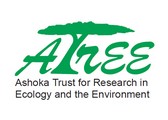Any and all opinions expressed in this newsletter are solely those of the author(s) and do not reflect the opinion of ATREE.
Centre for Excellence in Conservation Science
Royal Enclave,Srirampura,Jakkur Post
Bangalore-560064
Telephone: 080-23635555 (EPABX)
Fax : 080- 23530070
The summer rains in the hills had just begun and the evergreen forests of KMTR
were wearing a fresh wet look; there were many species of trees in flower and
as one counted them the numbers began to build up and soon it was apparent
that it was a major flowering year in the forest which according to our long term
monitoring data is a 'rare' event. We can say rare only because we have been
monitoring such events for a long time now. Coming July 30th, the moon will
start a new cycle signifying the culmination of the annual festival in the Sori
Muthaian temple in KMTR. As we gear up to continue our drive for a cleaner
and greener festival, I couldn't help but notice the path that we have treaded to
reach this stage of our campaign. For some of us who joined ATREE in the
recent past, the campaign has given us a first-hand view of the effort and
dedication that is needed to carry out a long term monitoring program. The
campaign essentially is divided in two parts – long term monitoring and
engagement with the stakeholders. The impacts of engaging with the
stakeholders are visible – entry and use of disposable plastic inside the forest
has been banned; a system is in place to enforce it and; a number of volunteers
from the local landscape are taking part in awareness campaigns and research
activities.
ATREE has set up many such long term monitoring programs to study the
dynamic systems inside the KMTR and in its foothills. Earlier, monitoring was
rooted in pure natural ecological systems, parameters viz. phenology, frugivore
abundances, plant-pollinator interactions and vegetation dynamics. Over time
our programs have evolved to include numerous socio-economic –ecological
systems. Socio-economic evaluation of the Eco-development and our
awareness program exemplify this diversification. As we are getting involved in
active conservation oriented programs, we realise integrating knowledge from
natural systems into the human-traditional-knowledge has greater scope of
success. Integration, also in a much broader sense enhances our
understanding of the forests and its interactions with human beings. The wealth
of information from our long term studies is the focus of this issue of Agasthya.
This issue also marks the beginning of a new design and a transition to include
research findings in Agasthya. However, the dissemination of the results
through different media is still an important key to achieve a popular mandate on
conservation and I feel this is the future challenge.
Editorial Team
Editor: Allwin Jesudasan
Associate editor: Rajkamal Goswami
Editorial Review: R. Ganesan, M. Soubadra Devy, T. Ganesh
Design and presentation: Kiran Salegame
A S H O K A T R U S T F O R R E S E A R C H I N E C O L O G Y A N D T H E E N V I R O N M E N T
Learnings from long term monitoring
-Allwin Jesudasan
If you have any suggestions or comments please let us know through the boxes below





